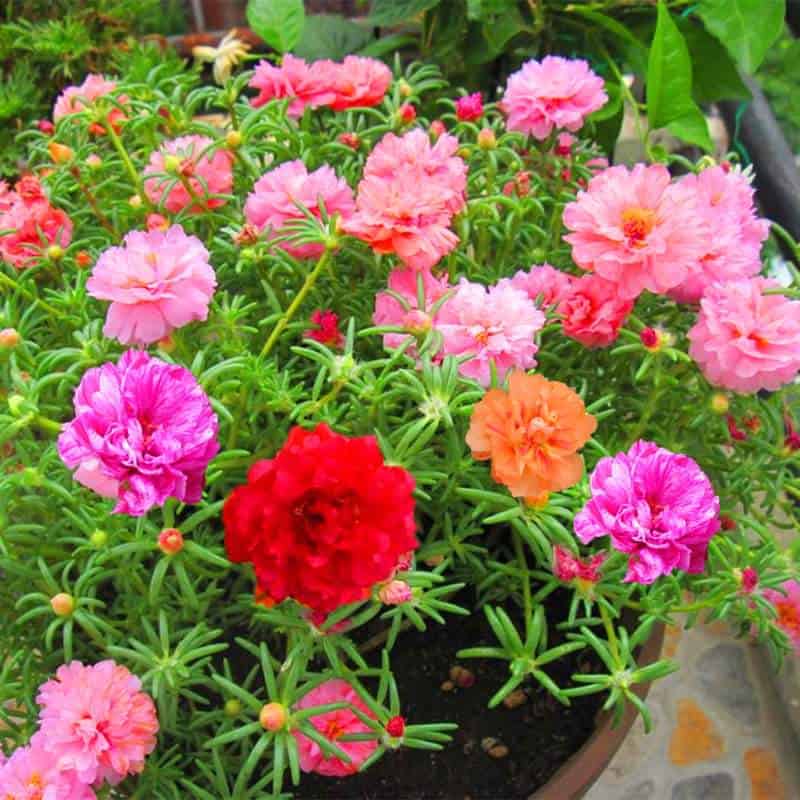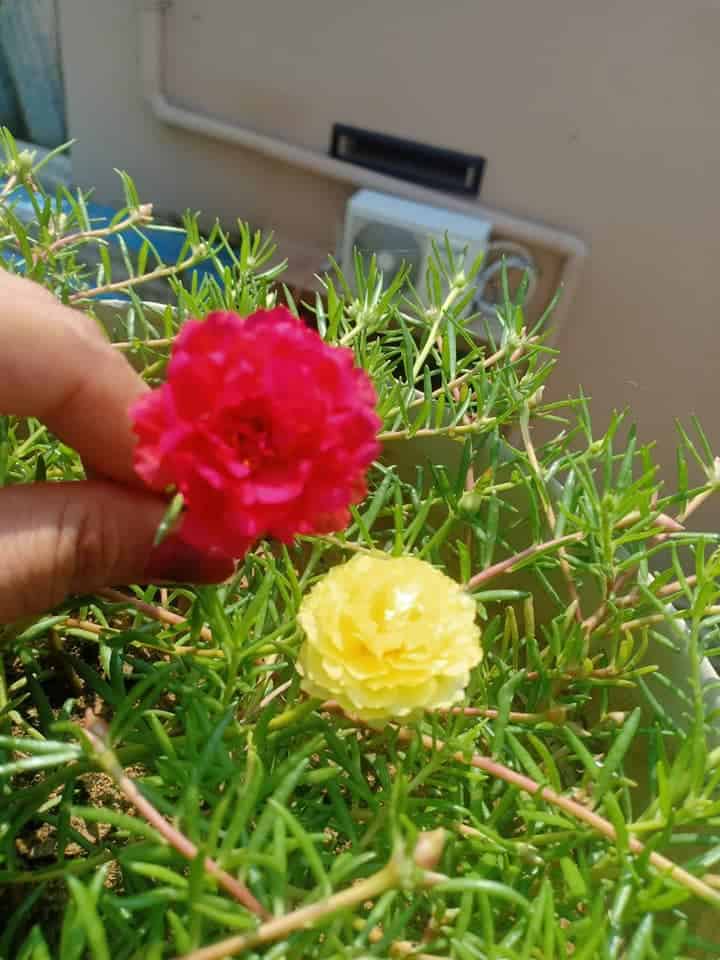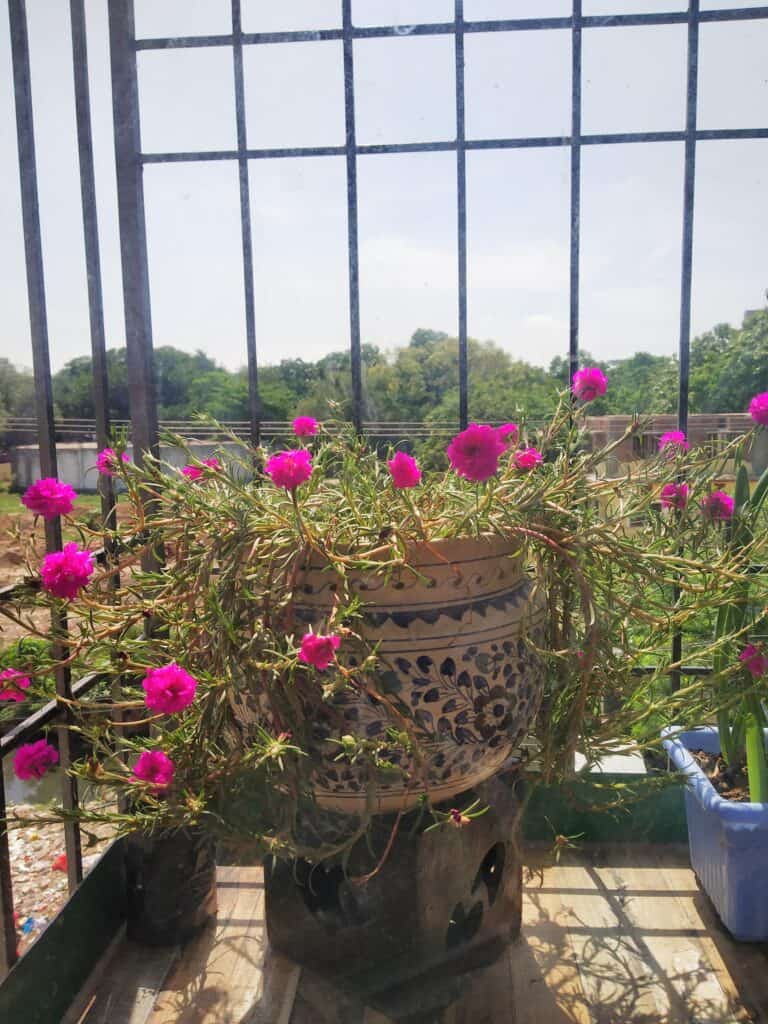Portulaca boasts rose-like flowers and foliage that grow low to the ground forming a moss-like mat.
Thus, a garden with colorful Portulaca in white, pink, orange, yellow, and green captivates anyone.
If you wish to relish numerous and long-lasting blooms of the showy Portulaca flowers, the deadheading Portulaca is the best option.
To deadhead Portulaca, choose the brown flowers and pinch them below the set of dead blooms with your hands. Pull the spent flowers from the stems that have finished producing new flowers.

Portulaca can help you leverage the pleasing appearance of tiny flowers throughout the growing season. But the dying blooms cut down your expectations.
To ensure your Portulaca looks best during its growing season, you need to deadhead Portulaca, and here is a guide for you!
Table of Contents Show
Does Portulaca Need Deadheading?
Portulaca is a summer-loving succulent with tiny flowers. Portulaca flowers need high light intensity to bloom, so they do not open on cloudy or rainy days.
Deadheading is necessary if you want your Portulaca plants to carry fresh blooms the entire growing season.

Moreover, the additional benefits of deadheading Portulaca are as follows.
- Deadheading the falling blooms helps Portulaca utilize all the energy for healthy and new flowers. So, you can encourage the production of fresh and colorful Portulaca blooms throughout the growing season.
- Deadheading is beneficial when you wish to shape your plant to a certain length.
- You can grow the Portulaca flowers to a specific boundary after deadheading the flowers frequently.
If you want these self-seeding plants to emerge again the following season, you should wait long enough for the flowers to produce and drop their seeds.
Since Portulaca is a self-cleaning plant, the flowers fall off naturally after fading. Therefore, deadheading is not mandatory for Portulaca.
When to Deadhead Portulaca?
For any Portulaca plant, the time for deadheading has a common rule. It is easy to deadhead the flowers once they begin fading.
You can deadhead the flowers of Portulaca that may take almost three weeks to fade.

After the flowers fade, these are additional signs that Portulaca needs deadheading.
- The Portulaca plant looks leggy during the late summer.
- The flowers begin curling up.
- The petals turn brown and crispy.
- The plant begins wilting.
Portulaca plants are useful for covering edging or pebbles, or walksides. Besides, you can also grow Portulaca plants in containers and hanging baskets.
How to Deadhead Portulaca?
As mentioned earlier, you don’t need to deadhead Portulaca only if you want the flowers to bloom all season.
If you finally decide to deadhead Portulaca, here is how you can proceed.
- You can deadhead the Portulaca flowers anytime when they begin to fade.
- Start pinching the dead Portulaca flowers using your hands or a pruner.
Gardeners choose numerous cultivars of Portulaca grandiflora for double flowers with extra petals and variations in flower color.
- When using a knife, sterilize it with 70% isopropyl alcohol and wear gardening gloves while deadheading Portulaca.
- Remove the spent flowers selectively.

- Pull the dead flowers from one stem only after the new buds of that stem bloom.
- Repeat with all spent flowers in the plant.
- Since your goal is to make your garden look neat and clean, do not leave the deadheaded flower dropped on the ground.
- Collect the deadheaded flowers and throw them in the compost pile.
Now, wait for your plant to replace the dead flowers with additional, fresh ones. This will only take about two weeks after deadheading.
How to Care for Portulaca after Deadheading?
After deadheading, your Portulaca may feel like it has shredded additional weight. So, the plant may need some love and good care that you can offer, considering the following tips.
- Place the Portulaca plant in an area where it receives direct sunlight for 6-8 hours a day.
- You can offer 1 inch of water to the plant per week during the growing season in the morning or evening.
- Also, Portulaca enjoys slightly acidic sandy soil with a pH ranging from 5.5 to 7.5. So, you need to opt the well-draining soil.
- Try to maintain humidity under 90% for Portulaca.

- Portulaca tolerates any high temperature, but you need not let temperatures go below 40 degrees Fahrenheit.
- Feed the plant in early spring and re-add the fertilizer in mid-summer to load the plants with the nutrients they need during the dormancy period.
- Prune your plant once it becomes leggy, usually during the mid-summer.
- Aphids occasionally infest Portulaca, so spraying the plant with insecticidal soaps will help to defend aphids.
Conclusion
Though deadheading is not compulsory for Portulaca, removing the spent blooms will encourage the plant to produce fresh flowers, adding elegance to your garden.
It is an effortless task you can complete in a few minutes without finishing the cup of coffee!
If you own other houseplants, you may need to learn about deadheading daisies, peonies, marigolds, and petunias.
Happy Gardening!
